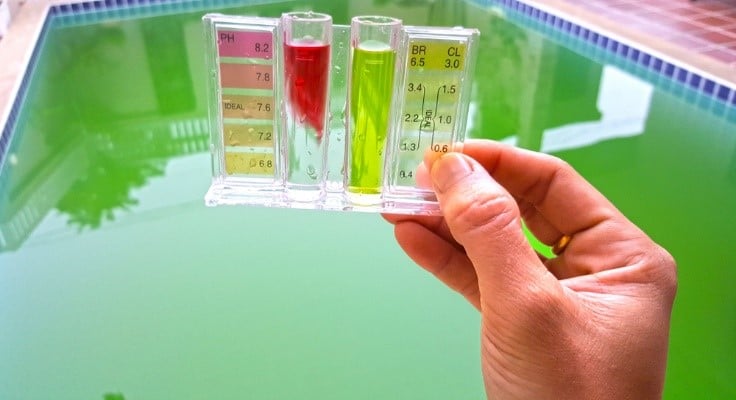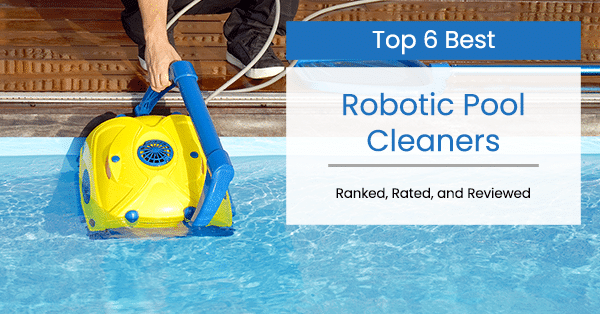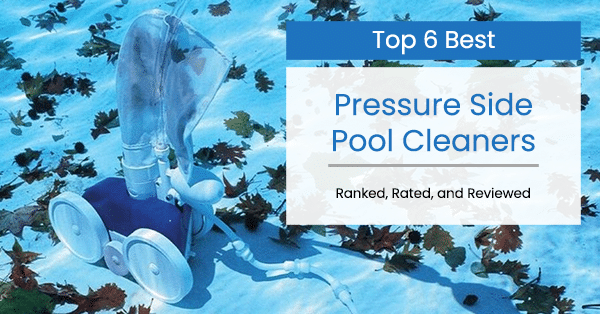A swimming pool is a fantastic way to relax and enjoy a refreshing swim on a hot summer day. Pool maintenance, including regular cleaning, is essential to owning a swimming pool. One of the most common issues in swimming pools is algae, which isn’t always thoroughly removed with a vacuum, filter, or pump.
Algae spores and growth often develop in in-ground and above-ground swimming pools, and when these algae bloom, it can lead to increased dirt, debris, and unhygienic, unhealthy conditions. For this reason, proper pool maintenance is crucial.
When pool filtration systems and insufficient chlorine doesn’t prevent algae growth, it’s essential to learn how to remove algae from a pool without a vacuum.
Regular Pool Maintenance
Thorough and regular pool maintenance is vital to prevent algae, debris, and dirt from accumulating in the pool water. One of the best ways to ensure that your swimming pool is clean and well maintained is to install adequate lighting to observe the pool wall, liner, and interior.
The pool filter system is the heart or pump that clears all debris and dirt to consistently remove contaminants, while water is kept clear from the pool floor to the pool surface.
A pool maintenance schedule is perfect for ensuring that your water is always clear and clean so that you can avoid a cloudy pool. Most pool filters contain a timer, which keeps your pool clear and prevents the growth and accumulation of algae with minimal effort.
Set the timer to run between eight and twelve hours daily so that your pool remains as clear as possible when you’re ready to swim with friends and family.
Chlorine Levels and Pool Shock
Chlorine is an essential part of keeping your pool water safe and free of contamination. It’s also essential to ensure that your pool water is pH-balanced, with a range between 7.4 and 7.6, so that your water doesn’t become too acidic or basic.
Baking soda can increase alkaline levels when the water is too acidic. Sanitizer is a vital pool cleaner to prevent dirt and algae growth, while the amount of chlorine added depends on the volume of your pool water and the type of sanitizer applied.
Pool shock is critical to keep on hand after a rainstorm or similar weather, resulting in contaminants falling into the water, including rainwater, leaves, and debris from nearby trees or structures. It’s also an excellent option to add pool shock after a large party, as this can prevent the growth of green algae, yellow algae, and other debris.
Recognizing the Signs of Algae Growth
You’ll notice some changes to your pool water, indicating algae growth. These signs include a green pool, where the water is green or blue, bluish-green algae around the pool pump and wall areas, and a cloudy pool with dirt particles and debris throughout the surface.
When you notice green pool water or similar growth around the liner and pump, the pool filter isn’t working effectively or running long enough to prevent contamination.

Types of Algae and Its Effect on Health
Algae is a common culprit for skin irritation, allergic reactions, and rashes. There are several types of algae found in swimming pools and hot tubs:
- Black algae are the most difficult to remove and grow in corners or between steps. The most effective way to eliminate this form of algae is with algaecide and scrubbing
- Green algae float on the surface of the water and are easier to remove with a skimmer or net than other forms
- Yellow algae tend to be resistant to chlorine, making them hard to remove. A good sanitizer and algaecide are often effective together
Clearing Algae Without a Pool Vacuum
Whether you have an in-ground pool or an above-ground swimming pool, it’s essential to keep the filtration system frequently cleaned so that your pool water remains clear. If you don’t have a pool vacuum to clean the pool bottom, which removes algae growth, there is another effective method to clear your pool of these contaminants.
A pool vacuum hose system is an ideal option for swimming pool owners. However, it’s not always effective in removing algae and preventing further growth. Even the best pool vacuum products can leave residual debris and black algae behind, which can get clogged in the filter if not cleaned regularly.
Initially, you’ll want to try your ground pool vacuum head to clear as much as possible, though you can use other methods to prevent algae and clear it from your pool’s surface:
- Use an effective algaecide to clear any remaining dead algae or residual debris from the pool bottom or surface of the water. Super Algae Guard is a great option for preventing and removing algae growth in the pool.
- Install a sand filter to remove small particles, including dead algae and mustard algae, which is resistant to chlorine and may grow where other forms of algae don’t thrive.
- Ensure you have all the best quality pool chemical products, including algaecide, chlorine, and pool shock, to prevent and stop the growth of algae as much as possible.
- Use a pool skimmer to clean the surface of any new algae growth. Pool skimmers may also successfully clear dead algae and leftover debris missed by the filter system.
- Clean and sanitize your pool filter often.
- When the pool is drained for the season, scrub any algae or mold off the pool walls with a sanitizing cleaner
- A suction pool cleaner is a great option for removing algae and other dirt along the pool walls and bottom, with less effort and time.
If your pool is attached to a hot tub, or you have one in your yard as well, you’ll need to use the same procedures to clear and prevent algae growth, including chlorine-resistant mustard algae. This cleaning process may include vacuuming, a pool skimmer, algaecide, and a well-maintained pool filter.
Prevention of Algae Growth
When you purchase your pool’s equipment, it’s essential to take note of warranties, repair, and replacement instructions, so that you get the most out of maintaining your swimming pool. When you take the extra time to schedule maintenance, assess and test your pool water, you’ll prevent many common problems with algae.
Bottom Line
It’s essential to keep your swimming pool bottom and surface clear and sanitary, with a high-quality vacuum and filter system. You’ll find this is just as important to follow a regular pool maintenance schedule, which includes cleaning the filter, testing the water’s pH levels, and keeping the pool surface covered when not in use.
Establishing a regular care and maintenance schedule is the key to getting the most enjoyment out of your swimming pool, without any health risks.

